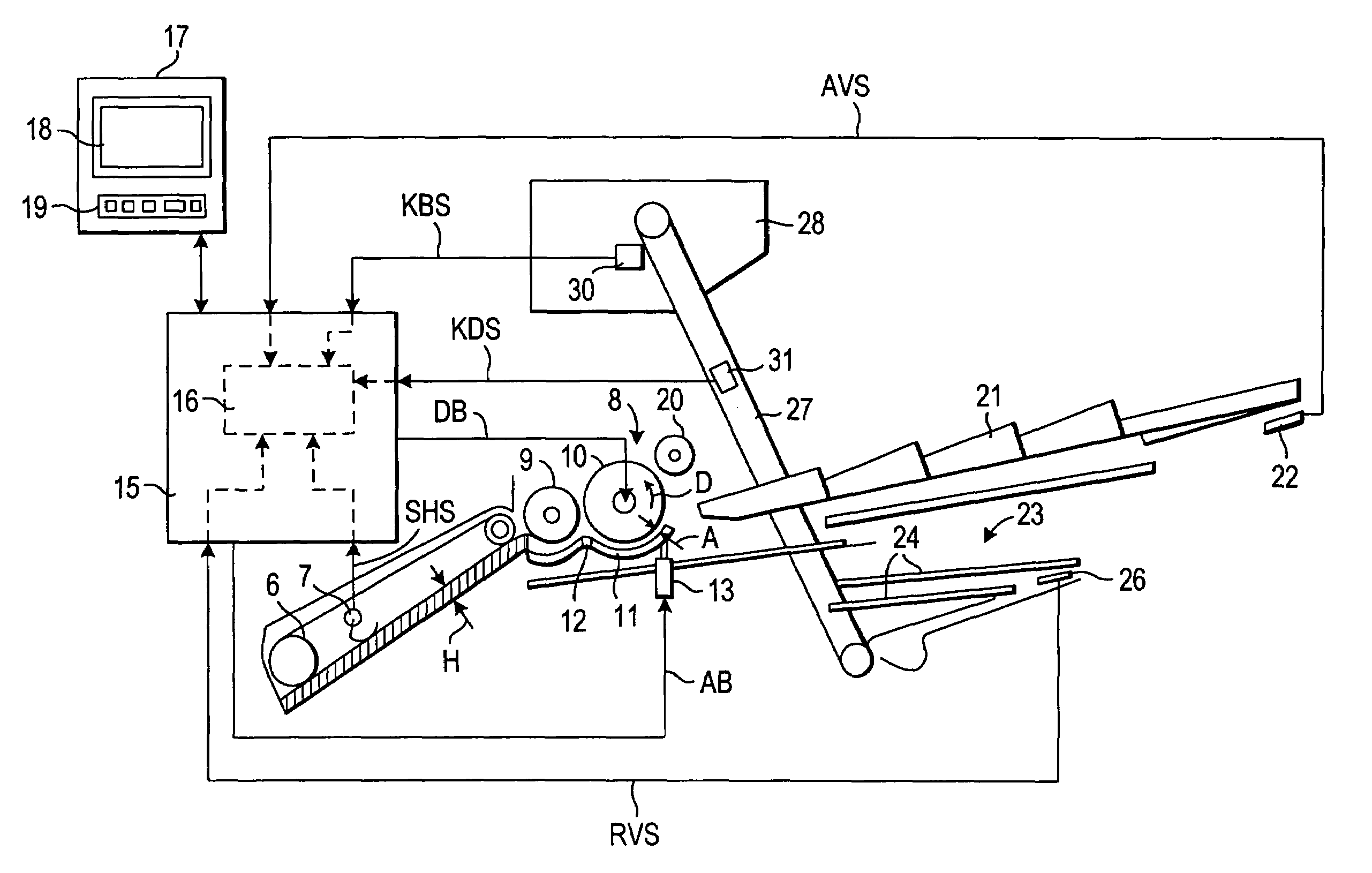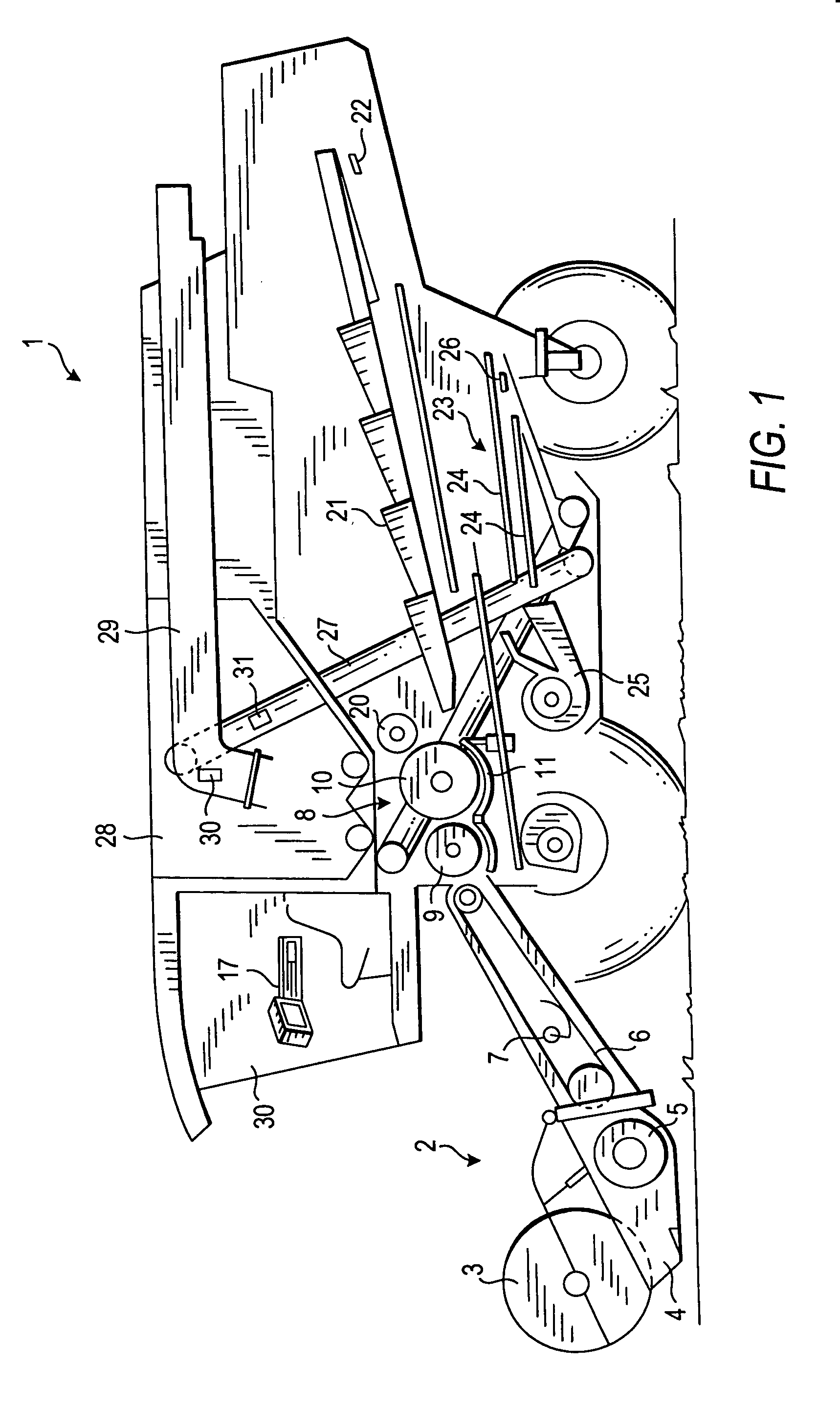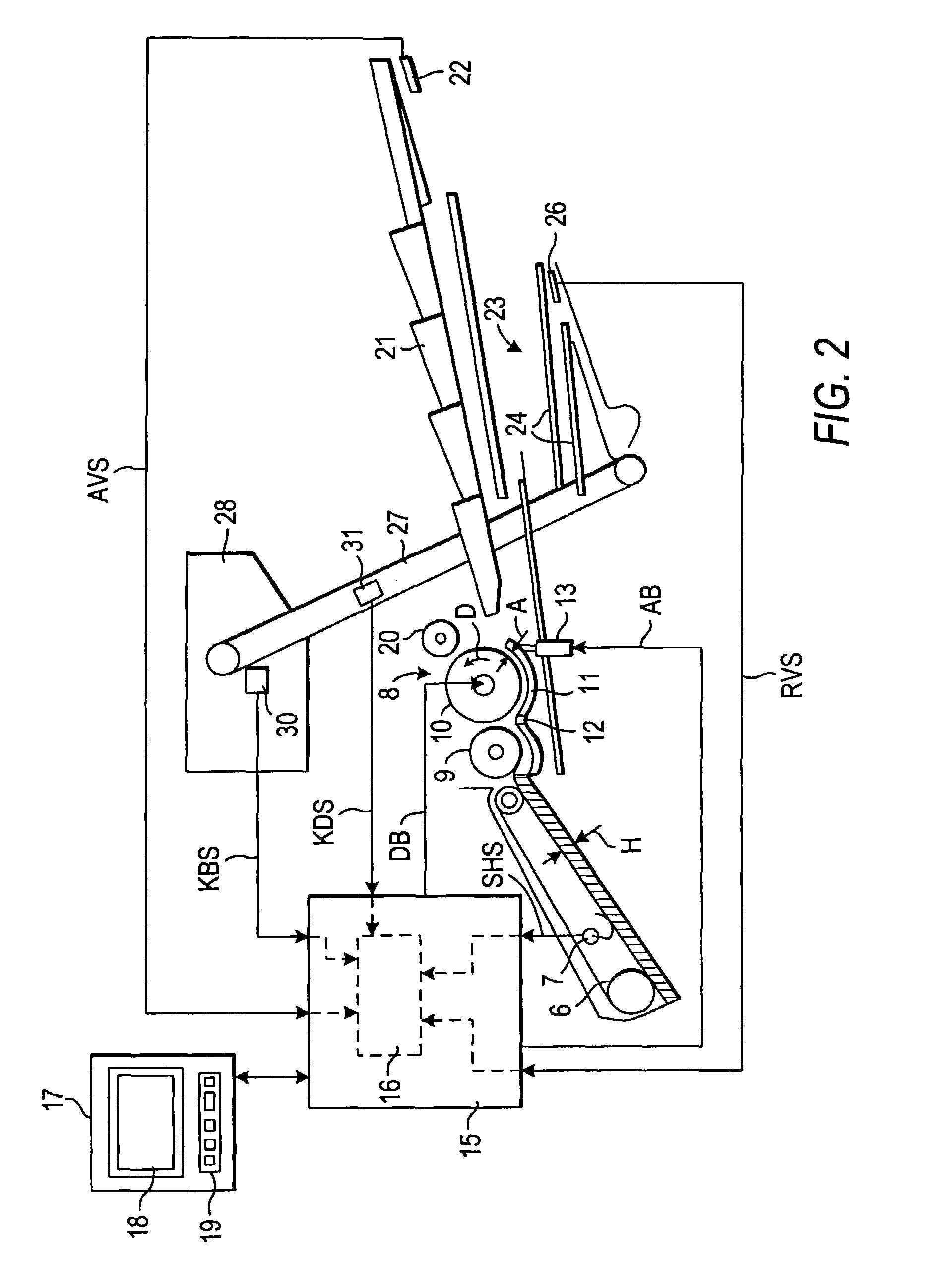Method of controlling a threshing mechanism of a combine harvester
a combine harvester and threshing mechanism technology, which is applied in baling, lighting and heating equipment, agriculture tools and machines, etc., can solve the problems of not being able to always maintain the targeted optimal nominal crop throughput, the driving operator is not easy to adjust all working unit parameters, and the loss increases as well. achieve the effect of fast and simple automatic reaction
- Summary
- Abstract
- Description
- Claims
- Application Information
AI Technical Summary
Benefits of technology
Problems solved by technology
Method used
Image
Examples
Embodiment Construction
[0030]As an example of the present invention, a self-propelling combine harvester is shown in FIG. 1 and identified with reference numeral 1. It has a so-called tangential or also a transverse flow threshing mechanism 8, and a shaker 21 arranged behind and operating as a separating device. The shaker 21 is formed as a hurdle shaker provided with several shaker traveling stages. Under the shaker 21, a cleaning device 23 is located. It is includes several sieves 24 which are arranged over one another, and also a fan 25. The invention of course is not limited to the combine harvester of this specific type.
[0031]The combine harvester 1 in accordance with the present invention operates in the following manner.
[0032]The crop is first inclined by a reel 3 of the mowing table 2 in direction of a mowing direction 4 and cut by the mowing knives. The crop is then transported through a feed anger 5 and an inclined conveyor into a feed passage 6 to the inlet of the threshing mechanism 8.
[0033]A ...
PUM
 Login to View More
Login to View More Abstract
Description
Claims
Application Information
 Login to View More
Login to View More - R&D
- Intellectual Property
- Life Sciences
- Materials
- Tech Scout
- Unparalleled Data Quality
- Higher Quality Content
- 60% Fewer Hallucinations
Browse by: Latest US Patents, China's latest patents, Technical Efficacy Thesaurus, Application Domain, Technology Topic, Popular Technical Reports.
© 2025 PatSnap. All rights reserved.Legal|Privacy policy|Modern Slavery Act Transparency Statement|Sitemap|About US| Contact US: help@patsnap.com



